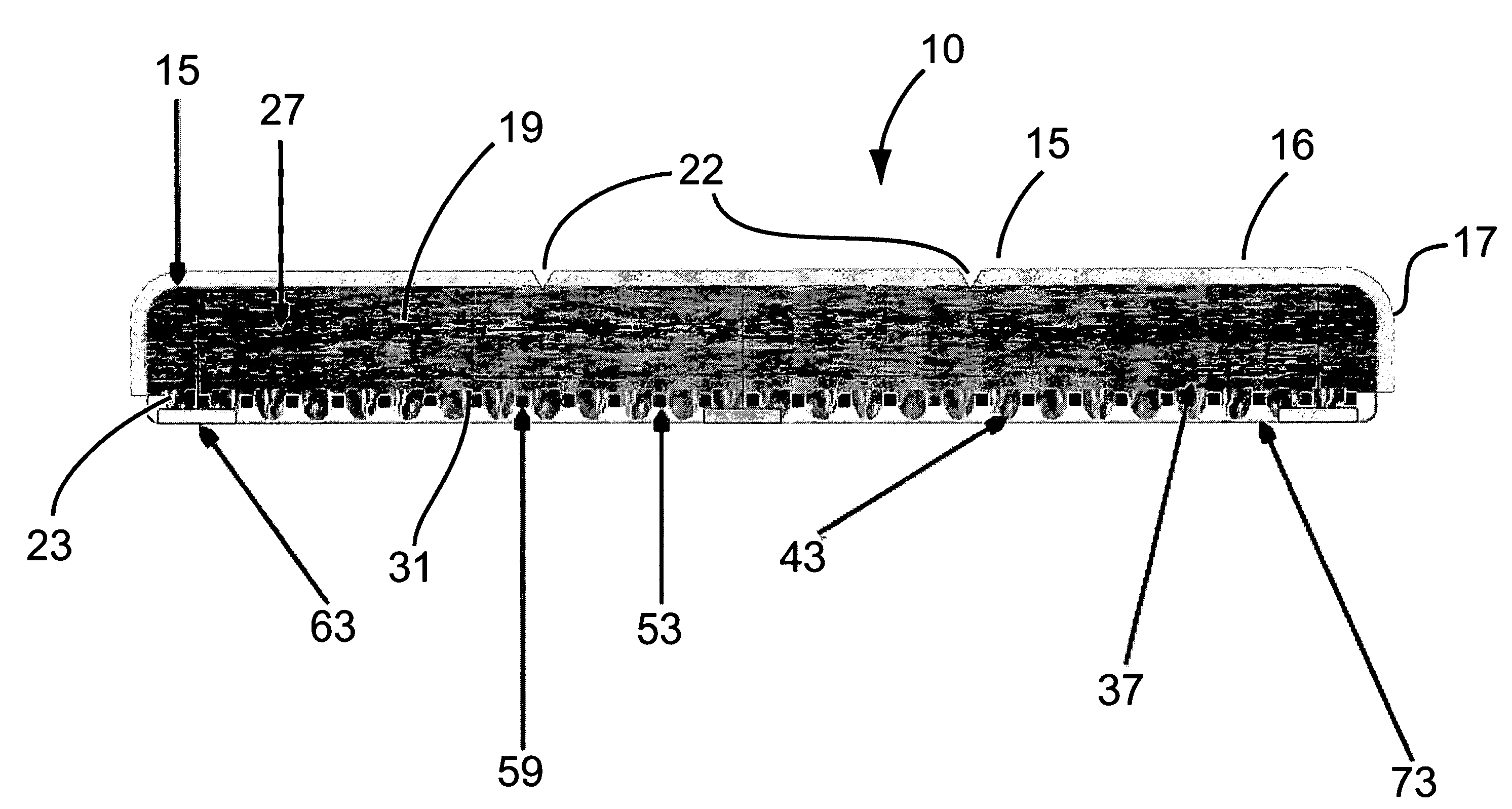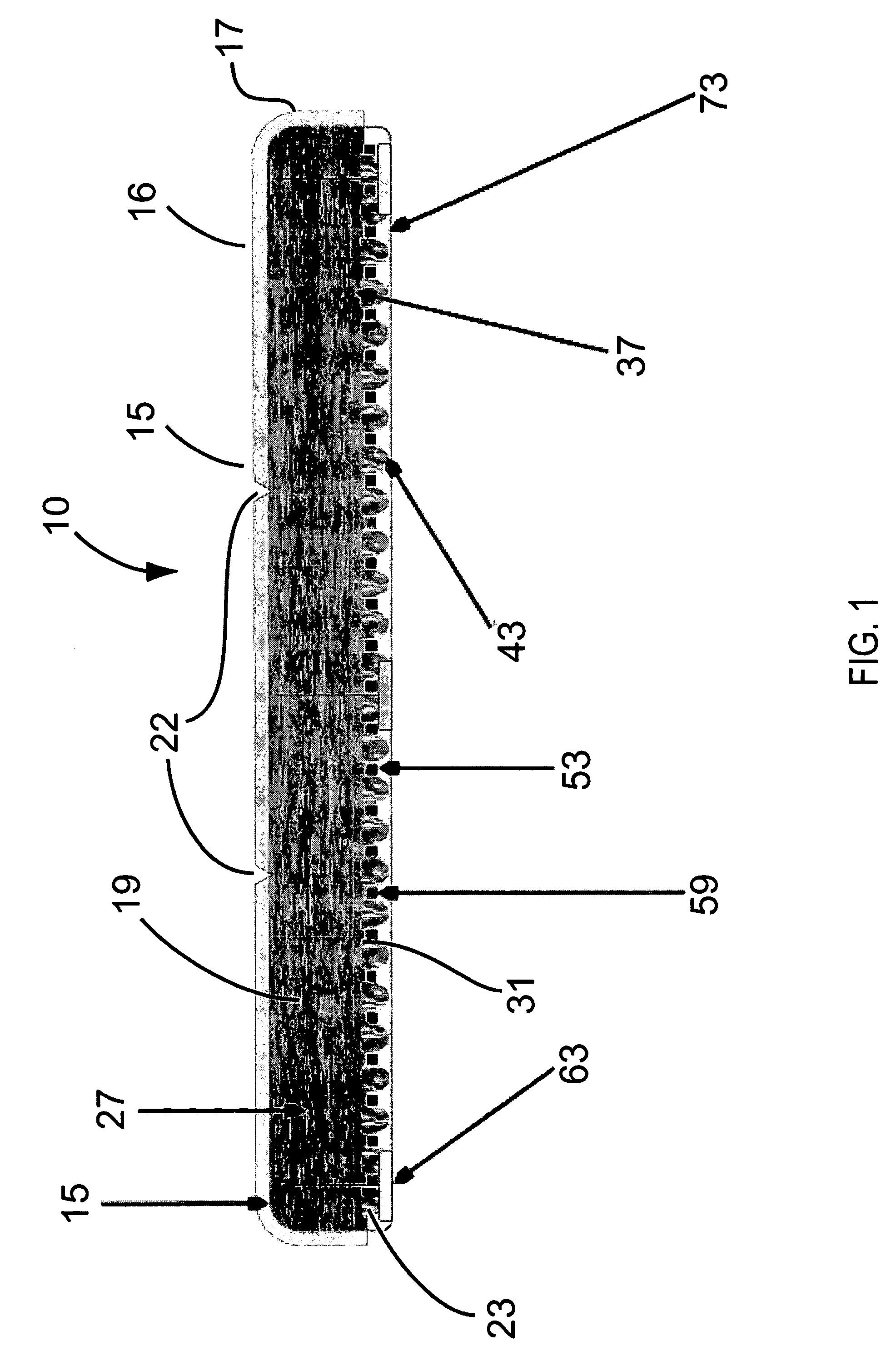Photo-thermal therapeutic device
a photothermal and therapeutic device technology, applied in radiation therapy, therapy, therapeutic cooling, etc., can solve the problems of increasing the activity of oxidative enzymes, increasing the tensile strength of wounds, and reducing the likelihood of wound dehiscence, so as to reduce the effectiveness of treatment over time, the effect of effective photothermal treatmen
- Summary
- Abstract
- Description
- Claims
- Application Information
AI Technical Summary
Benefits of technology
Problems solved by technology
Method used
Image
Examples
Embodiment Construction
)
[0016] The invention is directed to a photo-thermal treatment device 10 as shown in the attached drawings. Photo-thermal treatment devices have been previously developed by the Assignee of this patent application. The teachings of U.S. Pat. No. 6,187,029 owned by the Assignee of this application are hereby specifically incorporated by reference as part of this patent application. The device is intended for noninvasive neurovascular stimulation in a user or patient. The photo-thermal device has an outer housing 15 having a back wall 16 and a sidewall 17 that defines a cavity 19. An opening 23 is positioned on the side of the outer housing 15 opposite the back wall 16 and the opening is in communication with the cavity 19. The outer housing 15 is designed to be positioned adjacent to the surface that is to receive light and heat stimulation from the photo-thermal device 10. In most applications the device is used with humans and it has been found that an outer housing having a width ...
PUM
 Login to View More
Login to View More Abstract
Description
Claims
Application Information
 Login to View More
Login to View More - R&D
- Intellectual Property
- Life Sciences
- Materials
- Tech Scout
- Unparalleled Data Quality
- Higher Quality Content
- 60% Fewer Hallucinations
Browse by: Latest US Patents, China's latest patents, Technical Efficacy Thesaurus, Application Domain, Technology Topic, Popular Technical Reports.
© 2025 PatSnap. All rights reserved.Legal|Privacy policy|Modern Slavery Act Transparency Statement|Sitemap|About US| Contact US: help@patsnap.com



